A while back I reviewed a book called Amazing Vehicles by Nathanael Kuipers and Mattia Zamboni. I thought it was an interesting concept - a book containing building instructions for ten lovingly-designed vehicles, each of which could be built in their entirety from the parts contained in just one fairly small, inexpensive LEGO set - Set 5867 Super Speedster. At the time I was frustrated to discover that my copy of the set was buried at the bottom of a cupboard somewhere and thus inaccessible, but undaunted I teamed up with my then-5 year old to raid his LEGO collection and find the necessary parts to build a multi-coloured version of one of the models in the book.
Having given Amazing Vehicles an enthusiastic thumbs up at the time, I was pleased to hear that Nathanael and Mattia had released a follow up - More Amazing Vehicles - a few months back, and I recently got around to picking up a copy which I managed to find for less than a tenner including shipping. The book (front cover above) closely mirrors the first volume in appearance, format and layout which is perfectly fine by me - if it ain't broke then don't fix it. Nathanael has impressively managed to come up with another ten vehicle designs which use the same parts palette as the designs in the first book, namely the contents of Set 5867 Super Speedster. The designs, which you can see on the back cover of the book below, are graded according to construction difficulty, and as was the case for the first book, a set of Mattia's beautifully-realised building instructions is included for each model. In addition to the building instructions, the book also contains building and design tips to help the reader realise their own original vehicular designs.
I once again need to commend Nathanael on the quality of his vehicle designs. The majority of designs on offer are excellent, so much so in fact that I finally pulled my finger out, braved my storage chaos, and dug out my sealed copy of of Set 5867 (below) from its inaccessible exile so that I could build a few of them.
The parts donor for the models, Set 5867 Super Speedster, is one of LEGO's Creator 3-in-1 sets; these sets contain instructions to build three different 'official' models from the parts provided, although alas not all at the same time. Having literally dusted the set off and taken a close look at it, it occurred to me that the three 'official' models - the Super Speedster itself, an SUV and a Kart - weren't half bad either. I therefore decided to build and review those three models as well, in addition to my pick of the designs from the More Amazing Vehicles book.
The box opens via a couple of thumb tabs (or just a sharp knife, depending on your preference). It contains 4 unmarked bags of parts and a couple of instruction booklets. There's no DSS. The instruction booklets (covers below) are compact and chunky; the thinner of the two booklets contains the building instructions for the primary model (the Super Speedster), an inventory of parts, and advertising for a couple of other 2010 Creator 3-in-1 sets, the LEGO Club and the Creator microsite (www.creator.LEGO.com). The other instruction booklet contains building instructions for the SUV and the Kart and that's all.
The set contains 278 parts, most of which are relatively common; only a couple of elements - a red curved 2 x 4 x 2/3 slope without studs and a trans-clear 33 3 x 6 slope which forms the windscreen of the Super Speeder - stand out as being harder to find. For reasons that I'll discuss later this is definitely a good thing.
I decided to build the kart first. This was a quick, fun build - it can't have taken me much more than 15 minutes or so to put together - and you can see the results below (click pictures to enlarge). Personally, I think it looks great - low and squat with some nice little details such as the foot pedals at the front and the exposed engine at the back - and it was a good taste of things to come.
Next up was the SUV. These days when I think SUV I generally think Chelsea Tractor, but in this case it was more reminiscent of some of the vehicles that compete in the Dakar Rally. This was another fairly quick and simple build, although perhaps a little more involved than the Kart. It looks pretty good from the front, sporting an imposing engine grille and clever use of clips to orient the windscreen vertically with studs facing forwards. The cockpit is spacious and features opening doors. The built-up rear section looks a bit clunky, suggesting that compromises had to be made as a result of the limited parts palette, but otherwise it's a respectable effort I reckon.
The primary model, the Super Speedster, is a lengthier and more involved build than the two alternate models, although it still took less than 30 minutes to put together. Having built it, my immediate reaction was that the publicity photographs and box art don't do it justice - it looks more impressive "in the brick". I think the back looks particularly good and quite Ferrari-esque; there's even a transparent (rear) engine cover as seen on Ferraris such as the 430, F40 and Enzo, beneath which you can see what looks like an eight cylinder engine. Although I'm not so keen on the 'stepped' bonnet or the way that the doors aren't flush with the bodywork (this seems to be a deliberate design feature rather than an unavoidable workaround), the Super Speedster is a decent effort overall and I like it.
In addition to looking pretty good, the Super Speedster has a number of play features which can be seen in the picture below (click to enlarge). Best of these is the rear engine cover which lifts up to expose the engine. In addition to this, the doors open, as does the bonnet.
Overall I thought that all three 'official' models were pretty good - fun to build, decent-looking, unpretentious and, in the case of the Super Speedster at least, incorporating a few play features. It's not often that I can give the thumbs up to all three models in a Creator 3-in-1 set, but in this case I'm delighted to be able to do so.
Having built, photographed and then disassembled all three 'official' models from Set 5867 it was time to dive into some of Nathanael's original designs from More Amazing Vehicles. I was immediately drawn to the F1 Racer so decided to start with that one. Compared with the 'official' models the build took me longer and was more fiddly and complex. It's quickly evident that the F1 racer isn't an 'official' LEGO build on the basis of some of the advanced building techniques utilised in its construction and the relative fragility of the finished model; studs are facing in literally all directions, and some seriously ingenious design work has gone into it. The bodywork is nicely contoured and sleek, little details have been expertly captured, and it's really not at all obvious that the designer has been restricted to a limited parts palette, such is the elegance of the design.
The next Kuipers original I chose to build was the Wrecker. Like the F1 Racer this was a fiddly build at times and also fragile in places. Also, compromises that had to be made as a result of the limited parts palette were perhaps more evident with the Wrecker than they had been with the previous models, notably in the passenger compartment, where one of the seats is lacking a cushion and the dashboard is messy. Even so, the finished model still looks excellent, particularly from the front, and some of the building techniques employed are ingenious. There's also a rudimentary play feature built in - the boom at the back can be raised and lowered.
In order to get this posting finished within a reasonable timeframe I figured I'd have to limit myself to building, photographing and briefly describing just three models from More Amazing Vehicles in addition to the three 'official' models from Set 5867. Having built the F1 Racer and the Wrecker it was genuinely difficult to decide which of the remaining models to choose as I wanted to build almost all of them. I eventually plumped for the Roadster, although will almost certainly build at least a couple more at some point. The Roadster (below - click to enlarge) was a quicker build than the F1 racer or the Wrecker. Once again it looks good from the front, and the interior looks great. I think that the back leaves a bit to be desired, however, looking rather unfinished to my eye. Also, the rear wheels snag slightly on the bodywork, and I did wonder whether I'd made a mistake during construction but it seems not. Notwithstanding my criticisms, it's another nice-looking model overall and was well worth building.
Honestly, I'm wondering whether there's any better value for money for a LEGO fan than a copy of Set 5867 plus Amazing Vehicles and More Amazing Vehicles; having thoroughly enjoyed building the three 'official' models and admired the results, I then spent an extremely enjoyable couple of hours building the three additional models above from More Amazing Vehicles and in truth I could have quite happily carried on and built the rest of them too if I'd had the time. I really can't praise the vehicle designs too highly - to be able to come up with so many excellent designs using a fairly limited parts palette takes some serious skill, and I'd love the authors to repeat the trick using parts from a different set - I'd buy that book like a shot (No Starch Press please note, if you're reading....).
Really the only fly in the ointment, apart of course from the need to dissassemble each model before building the next one, is that Set 5867 is now retired and no longer available at retail. You can certainly track down a copy via the likes of Bricklink or eBay, but prices are generally higher than you'd expect for a recently-retired Creator set, and I suspect that this might be driven by owners of Amazing Vehicles and/or More Amazing Vehicles looking for a copy. If you're put off by the price of the set on the secondary market, an alternative stategy is to just source the parts needed to build the models via Bricklink or Brickowl, and you can find a parts listing in both books to facilitate this. It'd be a bit of a pain, but as previously stated the vast majority of the necessary elements are at least widely available and fairly inexpensive so this is certainly a viable alternative to buying the set.

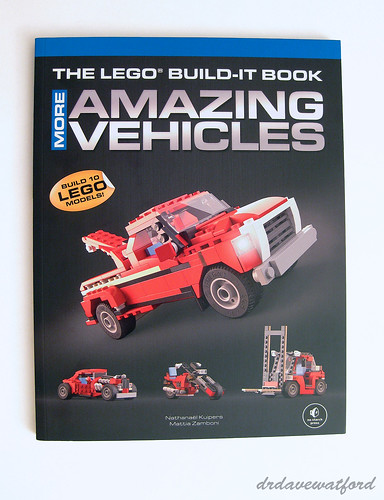
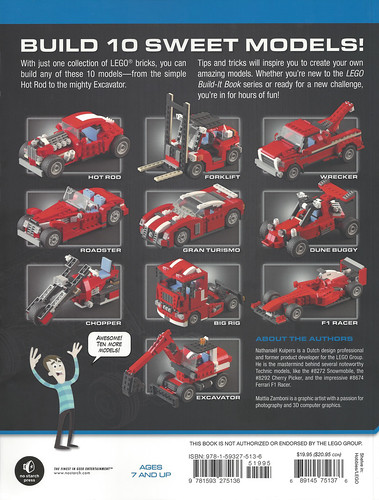

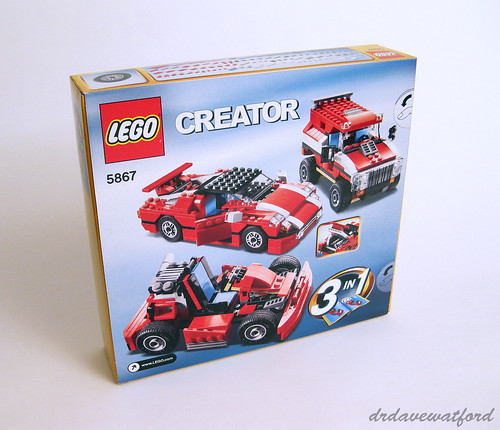

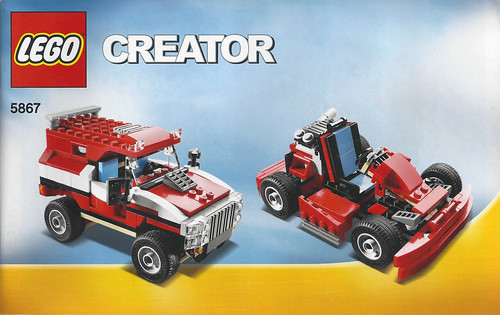
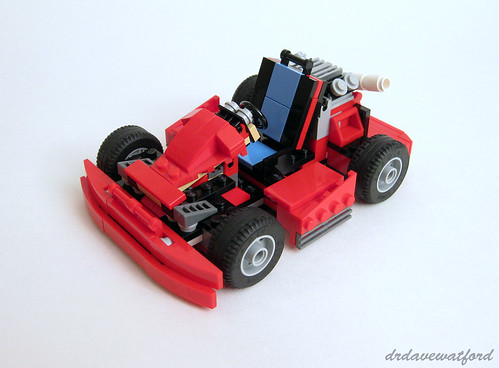
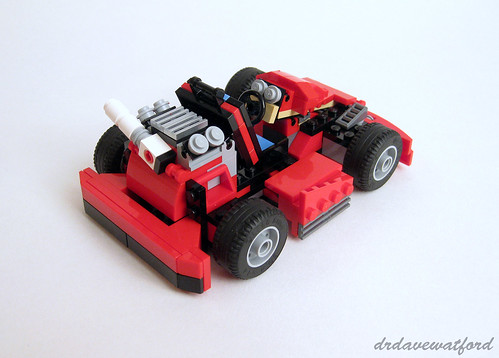

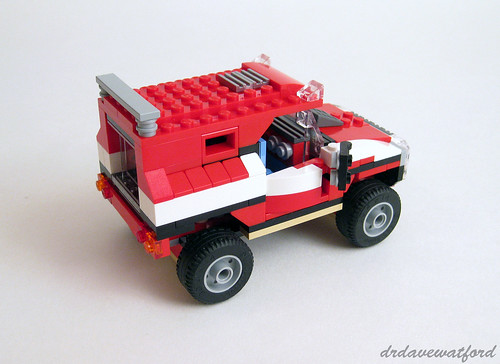
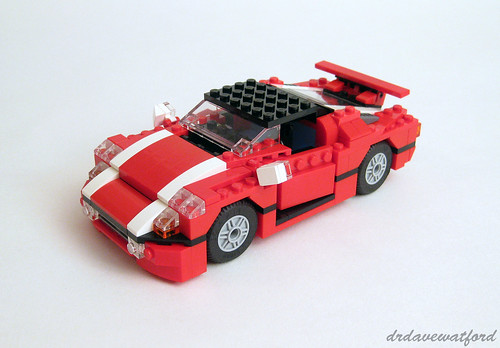
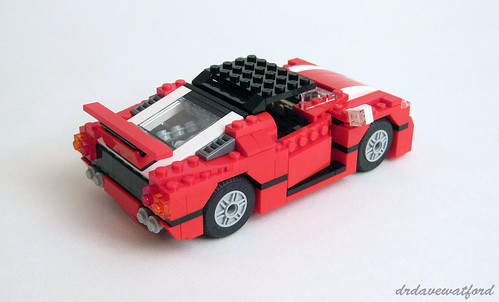


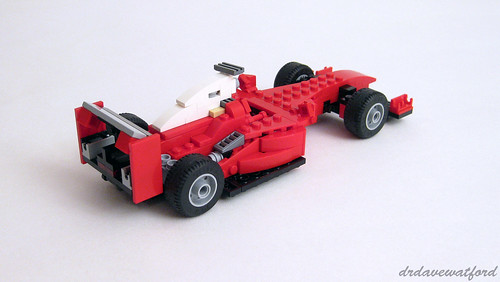
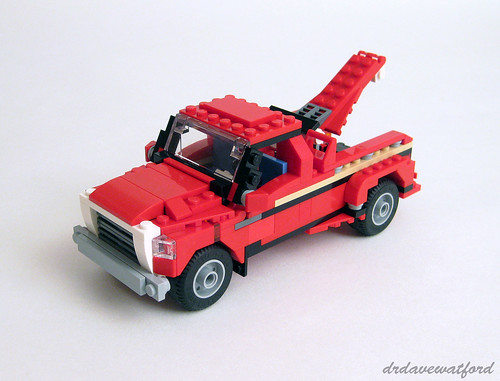
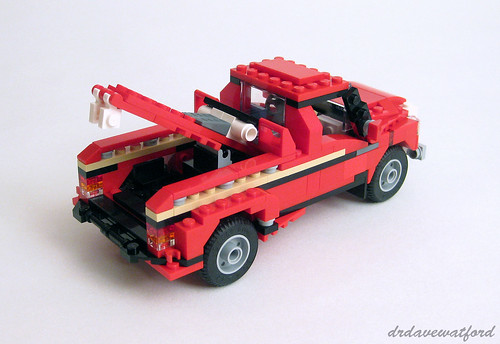
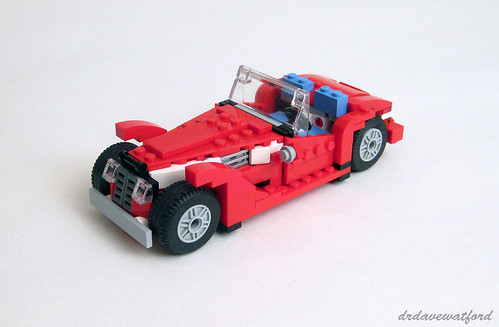

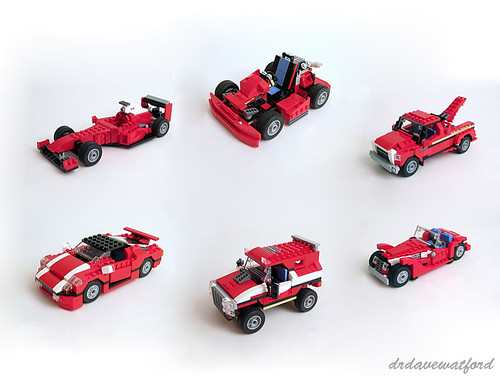
No comments:
Post a Comment